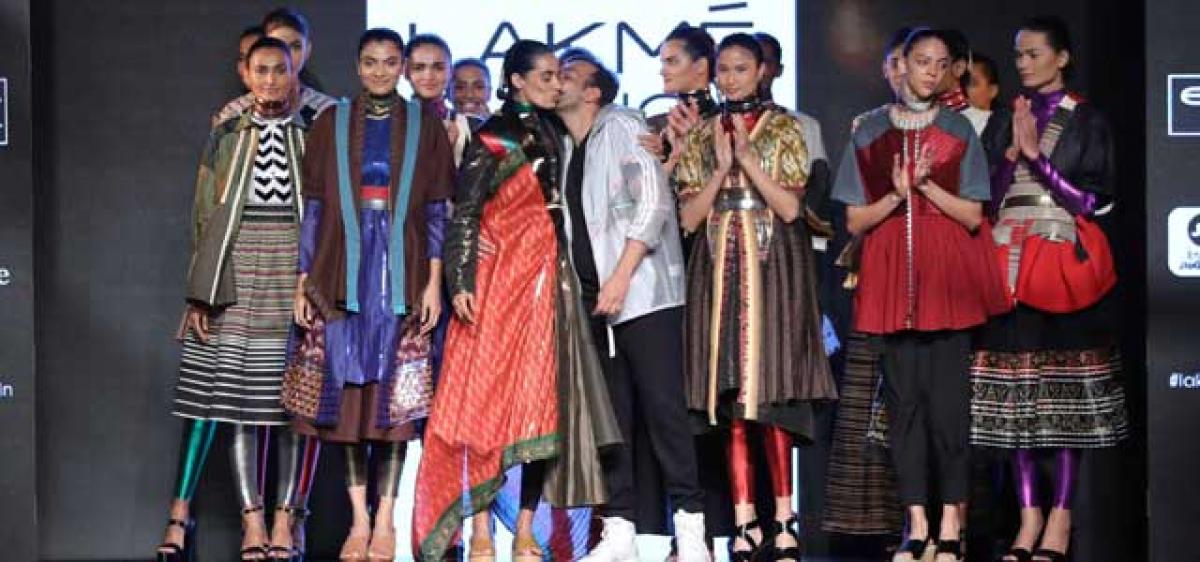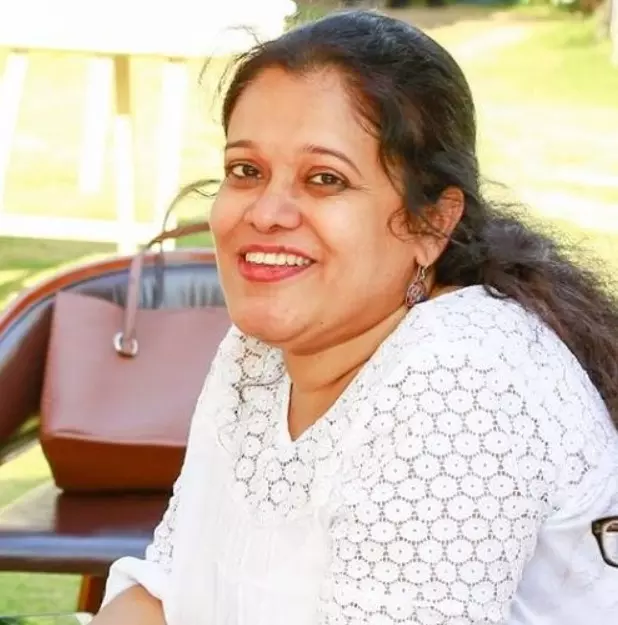Live
- Get Ready in Minutes with Wear and Go Wigs from RemyForte.com
- PM ‘cursing’ Congress out of despair: Maharashtra Cong Chief
- Applications are invited for Junior Colleges Scheme District Scheduled Castes Development Officer Ramlal
- A nomination was filed on the second day for the Nagar Kurnool parliamentary seat
- SP Gaikwad inspected the Telangana Amarnath Saleswaram Jatara yatra arrangements
- Rahul Gandhi's decision to contest from Wayanad shows 'lack of confidence': BJP President Nadda
- IPL 2024: Delhi bowlers will go after all of SRH’s top-order batters, says head coach Ricky Ponting
- At Amroha rally, PM Modi sends out ‘meaningful’ message for Muslims and Hindus
- Tripura records highest 79.83 pc voter turnout in Northeast
- The government has to clear the confusion
Just In

Designer Amit Aggarwal’s AM.IT – the ready-to-wear line has teamed with Lame Salon for the recently held Lakmé Fashion Week Summer/Resort 17, to create a collection and together redefine upcycling conversations. For Amit’s designer label, the show was just a step ahead.
Designer Amit Aggarwal’s AM.IT – the ready-to-wear line has teamed with Lame Salon for the recently held Lakmé Fashion Week Summer/Resort 17, to create a collection and together redefine upcycling conversations. For Amit’s designer label, the show was just a step ahead.
Since some time now, each season, AM.IT is taking the “no longer usable” products and industrial waste, and breaking it to the original raw material that was used to make them. This raw material is then given another identity.
A central recycled material is integrated with a traditional craft from India that is utilised in multiple ways throughout the range of garments. In short it is the coming together of established products by the artisans, the industrial by-products from the greater commerce and AM.IT’s parent label Amit Aggarwal’s imagery and execution.
Amit Aggarwal shares, “When we talk about being pro-environment, it’s not only about going organic. There are so many by-products of technology and industries that can be incorporated intelligently into your design.” In an exclusive interview, he shares the process.
‘Indian sensibilities in contemporary context in an eco-friendly way’ seems to be the philosophy of your present line...please comment on how this has been possible?
We were looking at utilising what was locally available in the country without doing any harm to the environment. Being pro-environment comes naturally to us and it's something the brand does as a responsible design ethic.
Craft is an integral part of the country's tradition and it's where it becomes the part of the label. I really wanted to keep the label nearer to what India is about. Combining all these components with my contemporary sensibility that you see in Amit Aggarwal couture was how AM.IT - the ready to wear took place. It's difficult yet easy, the making of this labour of love.
Putting together many identities together can be a bit overwhelming, like Indian textiles, recycled waste in a modern setting. But having done six seasons now, we know how to control things and what will work for the label.
From the time you thought of the concept to now...what have been the high points of the process for you as a designer?
Designing a collection was never a linear process. We do more than three collections every season that have a single source of inspiration. How a single idea gets executed in different frameworks of ready to wear, couture, and Indian wear is one exciting thing about the process.
There are attributes we pick up in the middle of designing a collection; with time the concept becomes a whole. From an idea to mood boards, textiles, materials, swatches to a complete look on the runway is a combination of many highs and lows that the design team goes through.
Like for Lakmé Salon & AM.IT's resort 2017 collection 'seamless', the idea was about upcycling old Patola sarees. But, to make it a wholesome collection we added various similar and contrasting elements. Juxtaposing organic hand-woven textile with recycled plastic material was the most challenging and fun aspect of the entire process.
How do your designs for this season blend with seasonal trends?
Our looks for 'seamless', Lakmé Salon X AM.IT Resort 2017 show at LFW comprise of metallic chokers, cinched waistlines, A-line shapes that are few of the elements that run parallel to the trends for this season.
What according to you set the trends in India - the Indian Fashion Weeks, International trends or Indian films?
There are many factors that affect what Indians tend to follow. There are trends that trickle down from what appears on the international fashion weeks through high street brands and local producers. Bollywood is one direct channel through which, people in India interact with fashion, making it a big influencer of trends in India.
Also, a huge lot of Indian designers catering to traditional handwoven textiles are keeping alive this wave of organic dressing in India. So it is a bit of everything that contributes to the setting of trends in the country.
How do Indian fabrics and handloom weaving techniques fare on the global fashion scene?
I think the respect and love people have for Indian traditional handwoven textiles in the world is just phenomenal. There are Indian and international organisations working extensively with the Indian craft to make it available to a much larger fashion market. The beauty of anything handwoven is unparalleled and with the tradition and craftsmanship the country has to offer, India stands high on the sustainable global fashion scene.
Do you think we are doing enough for Indian fabrics - promote their use?
There has been a huge number of crafts and craftsmen adopted by the Indian fashion industry but I feel it will never be enough until every craftsman secures a decent source of income and working environment.

© 2024 Hyderabad Media House Limited/The Hans India. All rights reserved. Powered by hocalwire.com







